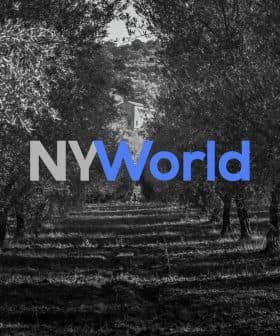Study Reveals Deep Faults in Carbon Credits; Olive Trees May Present a Solution

An international team of researchers found that millions of carbon credits are generated annually due to overestimation of forest preservation in 18 UN projects, with only 6% of the credits actually linked to additional carbon reductions. Olive growers have the potential to earn significant revenue by sequestering carbon dioxide through their trees, with calculations showing that traditional olive groves could sequester about 21 million tons of carbon dioxide annually, providing a credible alternative to flawed forest preservation projects in global carbon markets.
An international team of scientists and economists from Cambridge University and VU Amsterdam have found that millions of carbon credits are generated annually due to the overestimation of forest preservation.
Better integration of olive growers of all types into global carbon markets could be a credible alternative to the evident flaws of some forest preservation projects.
The researchers looked at 18 projects – known as REDD and REDD+ projects – overseen by the United Nations to slow deforestation in Africa, Asia and South America. They determined that the 18 offsetting projects produced millions of carbon credits based on “crude calculations that inflated their conservation impact.”
The research found that only 6 percent of 89 million credits created by the offset scheme were linked with additional carbon reductions from forest preservation. More than two-thirds of the credits came from projects that either did not or only slightly reduced deforestation.
See Also:Pollution Party Over as Europe Agrees to More Strict Emissions Trading SystemCarbon credits come in three forms and can be sold by project developers to brokers or end consumers seeking to offset their carbon emissions.
There are 30 compliance carbon markets globally covering about one-fifth of all greenhouse gas emissions, trading $2.8 billion (€2.62 billion) of carbon credits. Separately, voluntary carbon markets exist for companies and individuals seeking to offset their carbon emissions outside of compliance carbon markets.
According to data from Ember, a climate and energy think tank, carbon credits are currently priced at slightly more than €83 per ton in the European Union. In California, carbon prices reached a record-high $37.49 (€35.05) per ton in July.
The 18 offsetting projects were issuing avoided emissions credits produced by preserving the rainforest and not cutting it down, which the researchers found were prone to overestimation.
Another type of carbon credit comes from removing emissions through carbon capture or planting trees. While some olive farmers are already taking advantage of carbon markets to earn extra revenue, there is plenty of room for more growers to take advantage of olive trees’ carbon capture potential.
Estimates for how much carbon dioxide is sequestered by olive trees vary significantly, ranging from 2.7 kilograms of carbon dioxide per kilogram of olive oil produced in super-high-density olive groves to 11 in traditional rainfed olive groves.
Globally, there are about 11.5 million hectares of olive groves, of which approximately 8 million are planted traditionally.
Efforts in Europe are underway to help olive growers of all sizes benefit from the ability of their trees to extract carbon dioxide from the atmosphere.
For example, the Green Economy and CO2 project verified that participating growers sequestered three tons of carbon per hectare of olive groves on average.
Project organizers estimate that the 160 farmers in Italy and Croatia sequestered 6,500 tons of carbon dioxide over three years, with a value of €539,500 in today’s market.
Along with publicly-funded initiatives, various private sector actors are also working to connect olive farmers with companies seeking mandatory voluntary carbon credits.
In Italy, Alberami calculates how many tons of carbon dioxide small-scale olive farmers are sequestering and connects them with buyers.
“When grown with conventional farming, traditional olive tree placement of a maximum six per six meters can produce up to 10 or 12 carbon credits,” co-founder Francesco Musardo told Olive Oil Times in a 2022 interview.
Olive growers who follow organic and regenerative farming best practices, including planting cover crops between rows of olive trees and practicing no-till agriculture, can sequester even more carbon dioxide.
“The same tree grown organically will absorb more than two or three times that quantity,” Musardo said. “This might give new financial incentives to go organic to many growers.”
Based on these calculations, organic olive growers could earn nearly €3,000 per tree each year (at current carbon prices).
According to the Cambridge University and VU Amsterdam study, the 18 forest preservation and reforestation projects covered nearly 7 million hectares.
If the equivalent land were planted with traditional olive groves, they could sequester about 21 million tons of carbon dioxide annually, valued at €1.74 billion worth of carbon credits.
Verifying carbon credits for removed emissions is easier to do than it is for avoided emissions. As a result, better integration of olive growers of all types into global carbon markets could be a credible alternative to the evident flaws of some forest preservation projects.
Olive growers would enjoy an additional revenue stream and be encouraged to follow more sustainable practices. At the same time, emitters could be assured their carbon credits make a difference.









